Are you enjoying your summer? Have you had a chance to spend some quality time outside?
As is true every summer, I spend many mornings outside, in nearby wild meadows, crawling around in the dew covered grasses looking for cool things to photograph. This year has been the year of the dragonfly! I have seen and photographed many, always trying to identify and remember each one so I will recognize them in the future. I’d have to say this has been fun, though also challenging at times, especially when the dragonflies didn’t get the memo to rest peacefully in front of me for several minutes so I can get a good look at them. Sometimes they just whiz by again and again and I’m left with only a fleeting view.
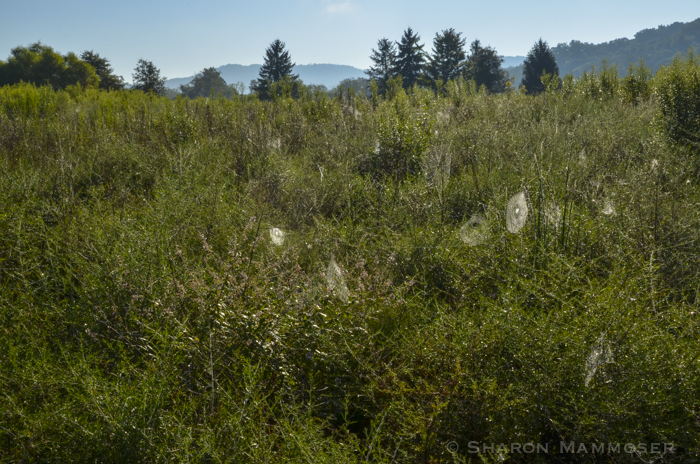
A few years ago I wrote a post about dragonflies, telling you 10 facts about them–like do they bite? How many species are there? How big did they used to be? Where do they start their lives? You can read about all of that here.
Well guess what? It isn’t hard to tell you ten MORE things about these amazing insects! (number 10 is for sure the oddest)
So here goes: Ten MORE Things You Might Not Know about Dragonflies
1. Did you know that like many birds, dragonflies are sexually dimorphic? That is, the females and males often look different, usually displaying a different color and/or wing pattern. Females are usually larger, and their abdomen is stouter. And just like birds, immature dragonflies are sometimes different from both the male and females, making identification even more challenging.
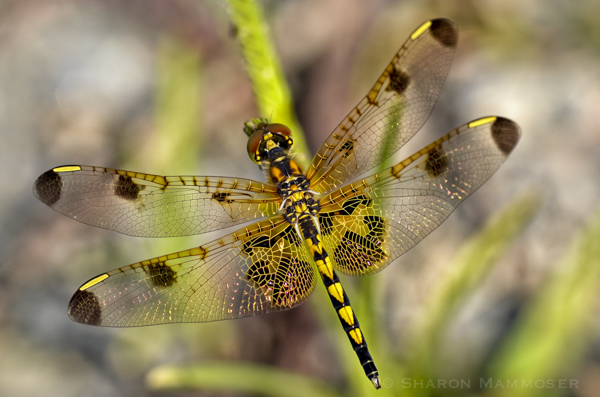
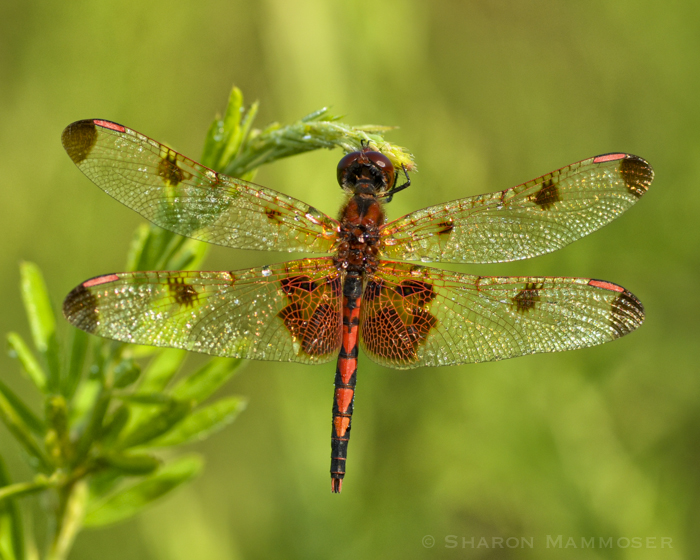
2. Check out this closeup of a dragonfly head.
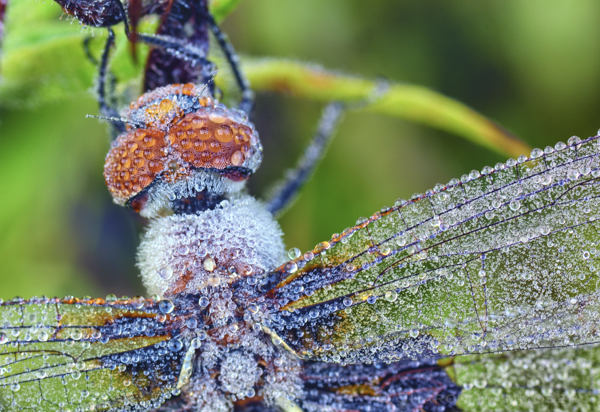
Notice the super short antennae–did you know that insects with excellent vision usually have short antennae? Dragonflies have compound eyes that can see almost 360 degrees. Dragonflies have up to 30,000 individual lenses in each compound eye! In addition to the two big eyes you see when looking at a dragonfly, they have 3 smaller, simple, eyes too. These are on the back of the head. Dragonflies can brush dust and water off of their eyes by combing them with the flat bristles on each front leg.
3 Dragonflies are such amazing hunters that they catch 90-95% of prey they go for.
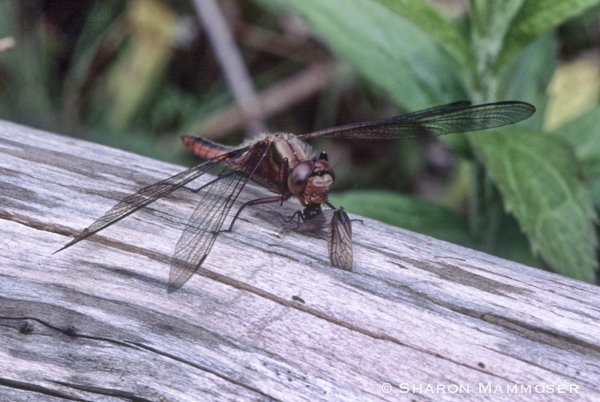
4. Part of the reason why dragonflies are so accurate is that they can move their four wings independently of each other, able to change the angles of each wing and the number of wing beats. They can even fly upside-down and backwards! (Just like hummingbirds!)
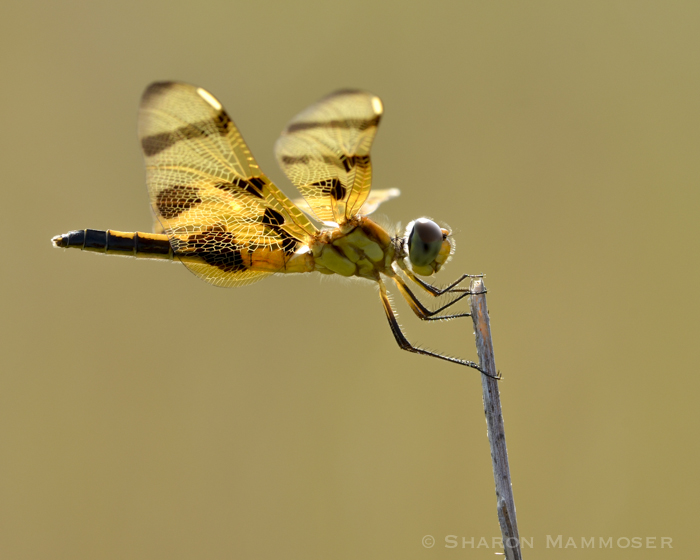
5. Dragonflies can see all the colors we see, plus ultraviolet light and polarized light. This helps them find water, be that still or moving water. Have you ever seen a dragonfly flying slowly over the roof of a car in sunlight? Sometimes they mistake shiny surfaces like cars, for water and females might try to lay her eggs on it! 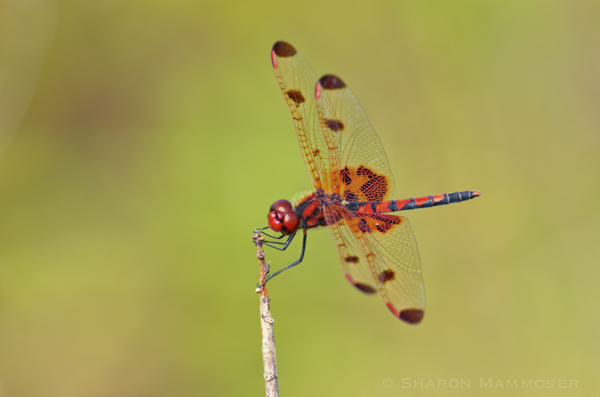
6 An adult dragonfly can eat up to 100 mosquitoes in ONE DAY! That’s why I cheer when I see them and why I love having them live by our pond. It’s hard not to root for animals that feed on mosquitoes! (Bats are in the group too)
7 In the late summer and early fall dragonflies can sometimes be found resting in the grass, their clear wings covered with hundreds of drops of dew. When they are in this state, they are often too cold to fly and must wait for the sun to warm their bodies before taking off. This makes mornings a FABULOUS time to photograph or observe them, since they are “stuck” until the temperature rises.
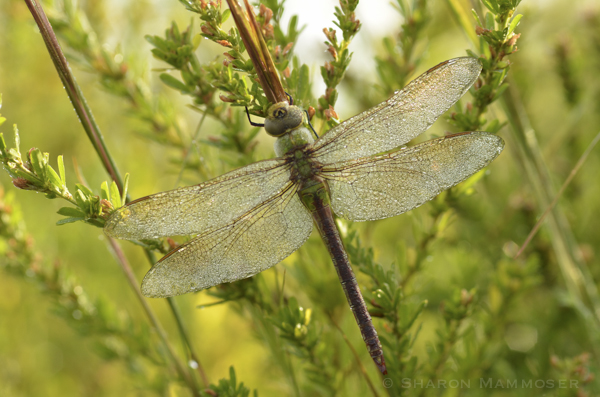
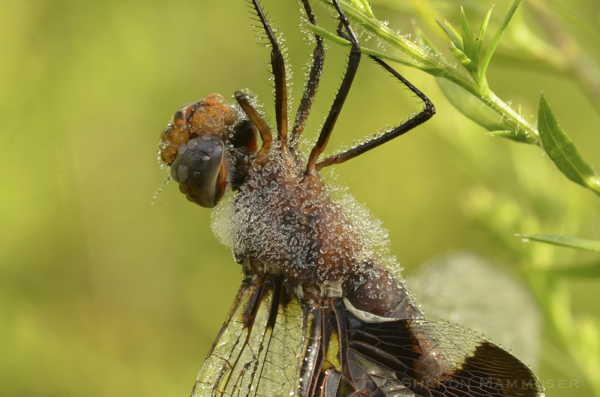
8 In my last post about dragonflies, I mentioned that dragonflies can regulate their body temperature by the position of their abdomen.
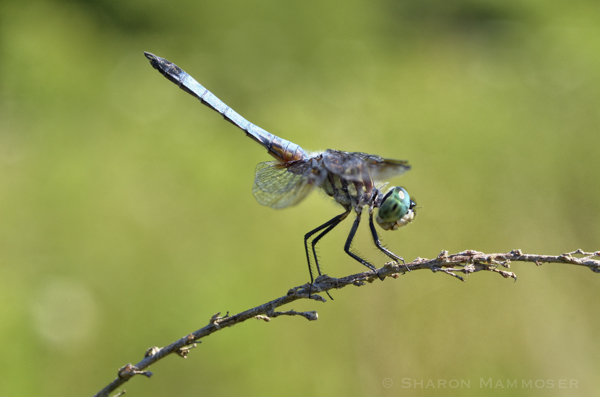
Since then I have learned that their color sometimes also changes based on the temperature. For instance, green darners look purple when they are cold but blue when they warm up. According to my field guide, Dragonflies through Binoculars by Sidney Dunkle, “darners blue markings are produced by tiny refractive granules in their skin cells that scatter light and help prevent overheating. Other dark granules migrate towards the surface of both bodies and eyes at cool temperatures, and at night. The dark purple or gray color thus produced hides the dragonfly when it is not flying, and allows faster absorption of the sun’s heat.” It’s like when it’s hot outside and you are wearing a black shirt–this is MUCH warmer than if you had on a white shirt.
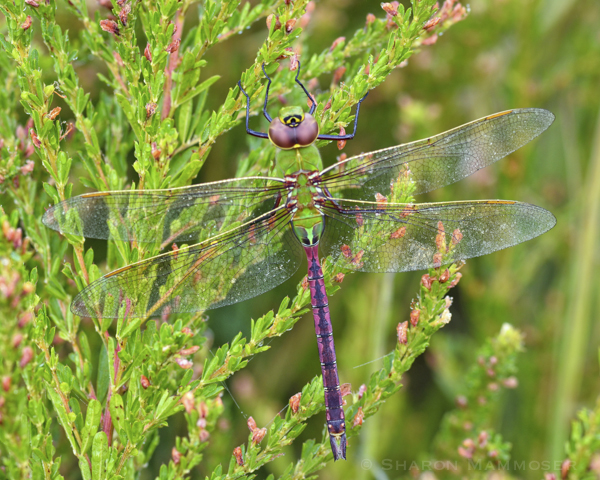
9 Different dragonflies have different ways of hunting. Some perch and then dart out to catch prey. Others fly around, looking for prey. Sometimes males will gather in feeding swarms, when insects are abundant. Females do not join in these hunts: any female that does fly into this feeding swarm indicates she is ready to mate–so much for eating with the boys! Dragonfly males also have a territory that they will guard, chasing away other males who venture in.
10. And last but not least, just in case you’re still looking for the weird fact with which to surprise your friends at your next dinner party–the penis of male dragonflies is not like other penises! Instead, the penis of a dragonfly is modified so that he can scoop out sperm from rival males, or push it aside to make room for his own sperm. Yikes, talk about possessive!
Here are a few more dragonfly photos:
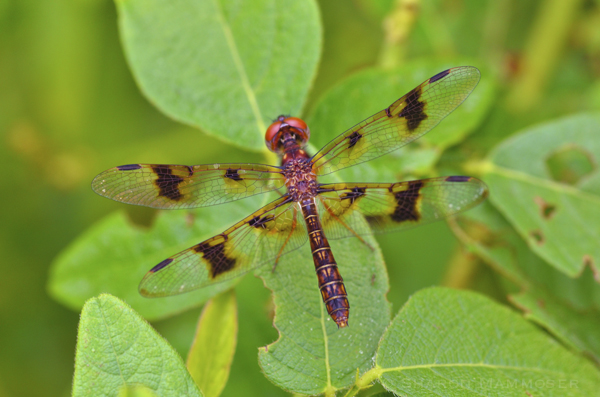
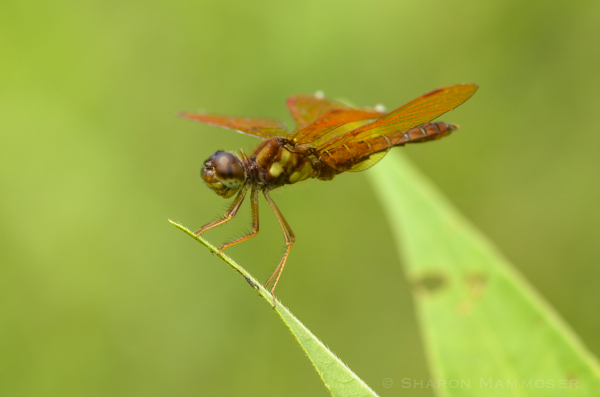
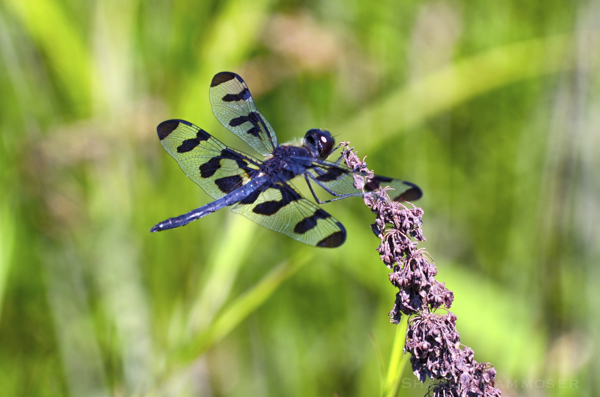
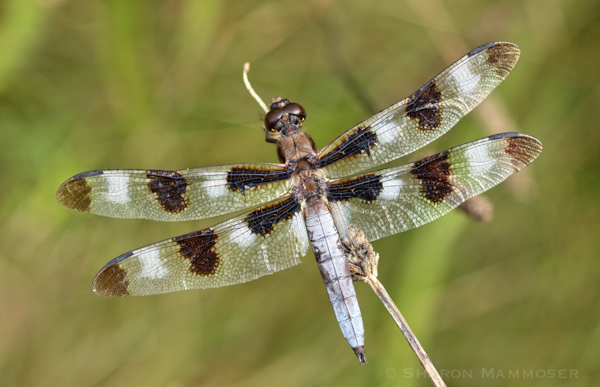
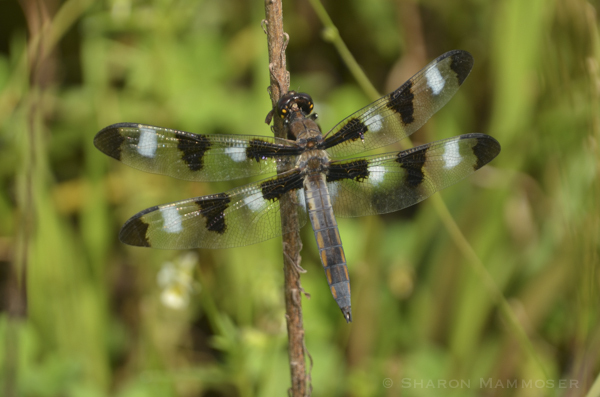
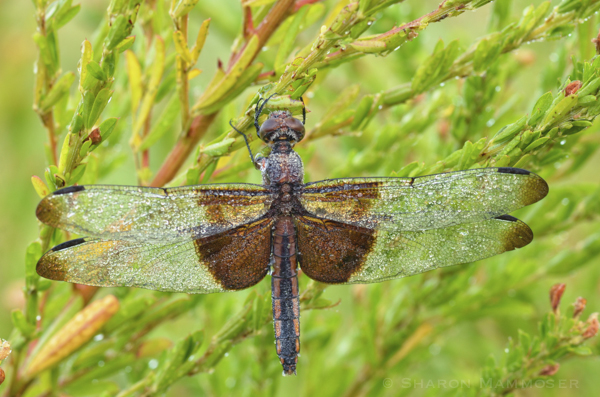
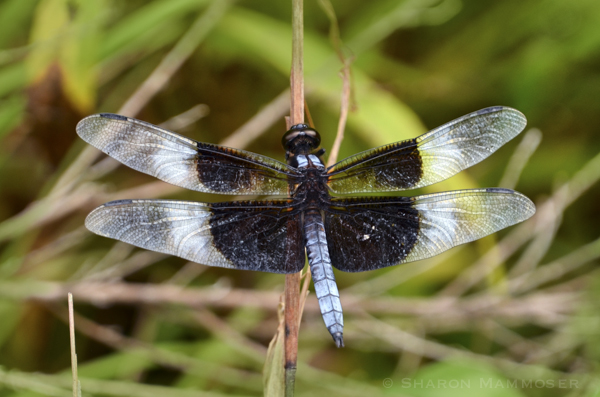
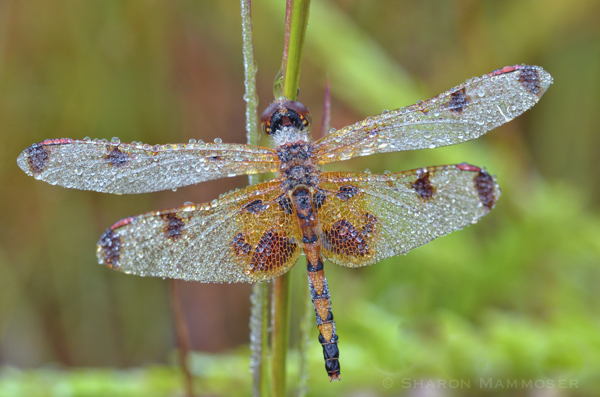
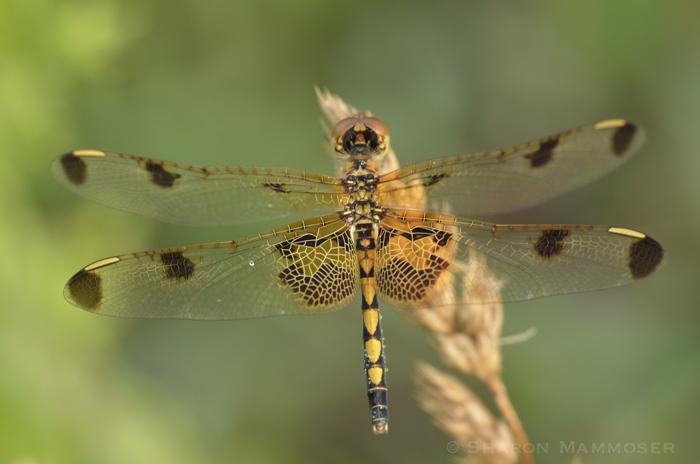
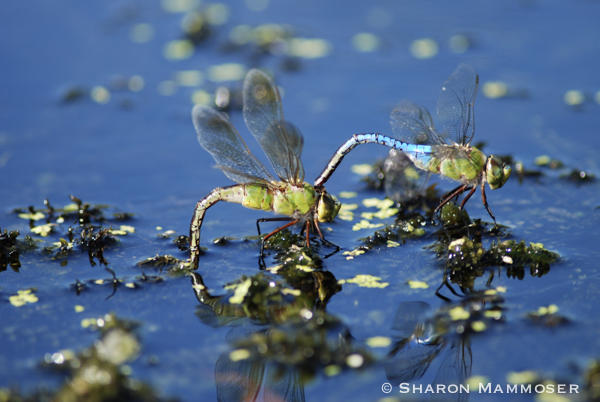
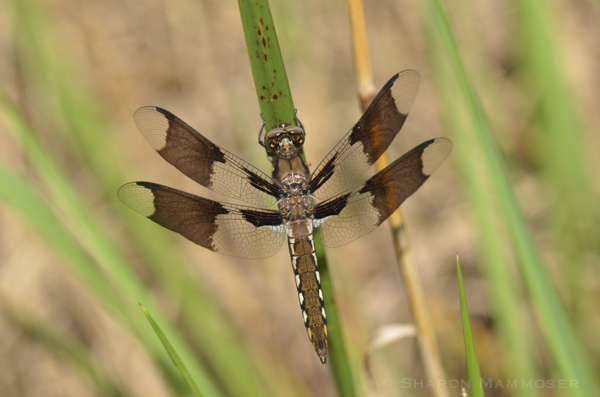
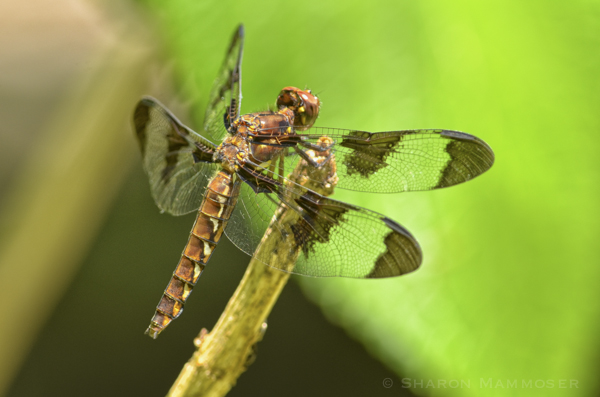
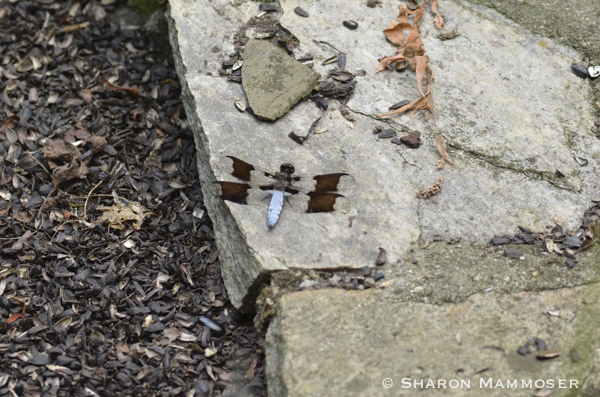

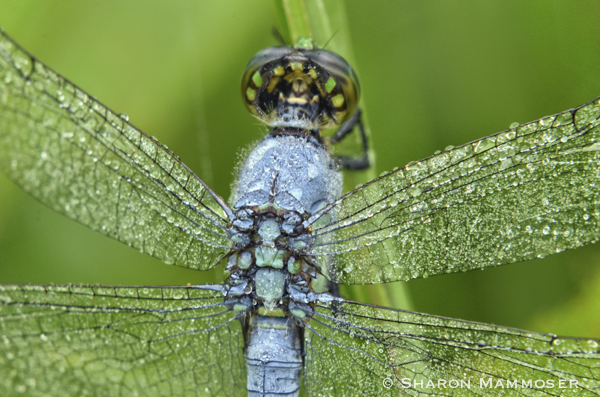
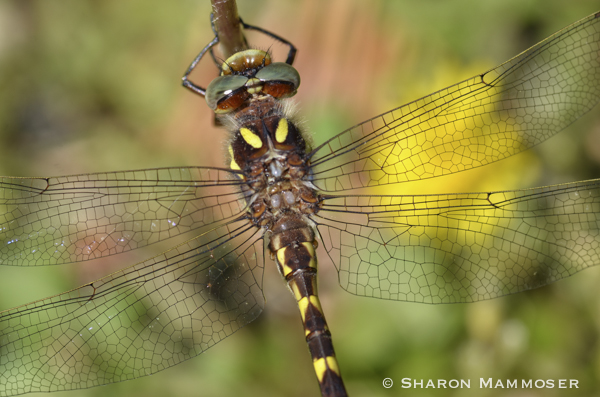
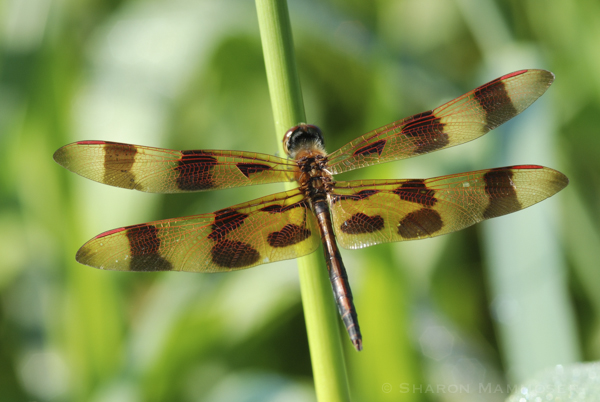
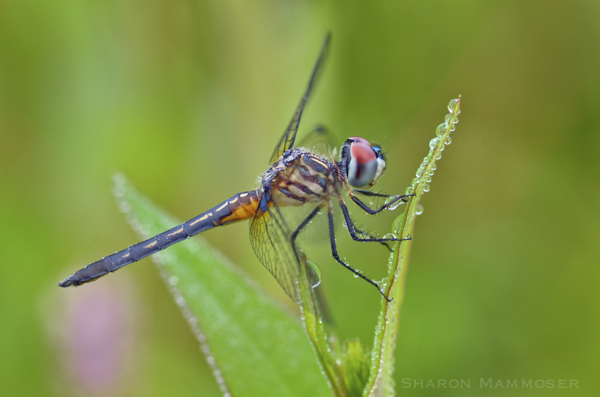
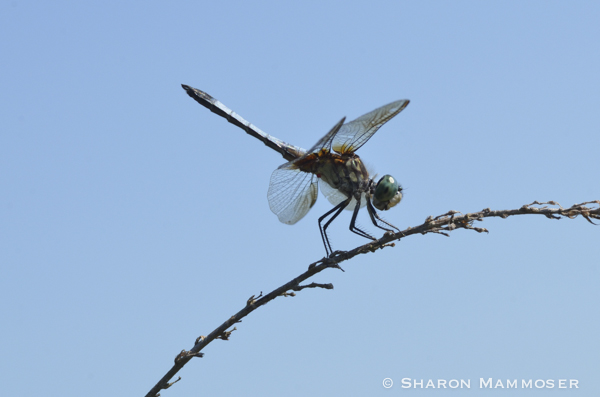
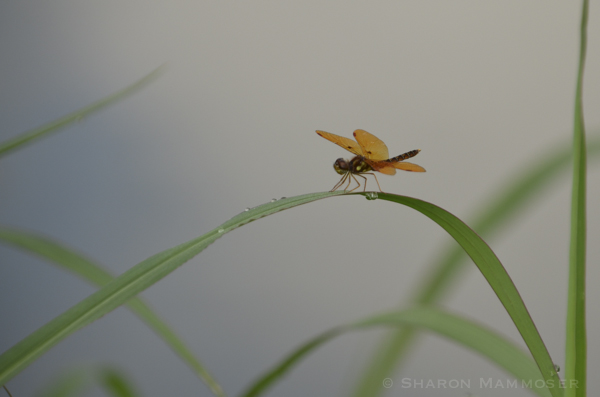
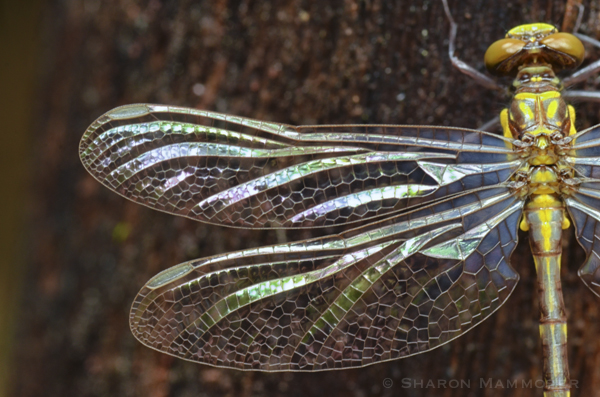
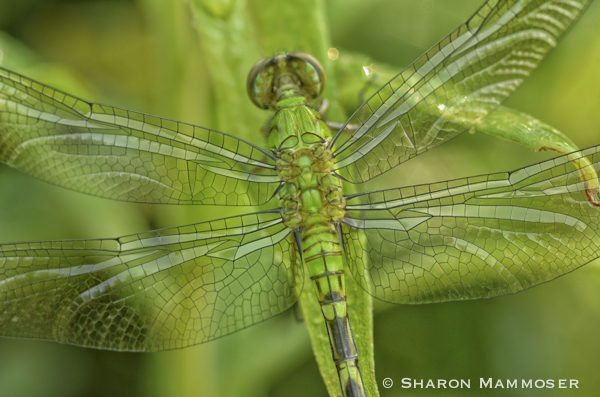
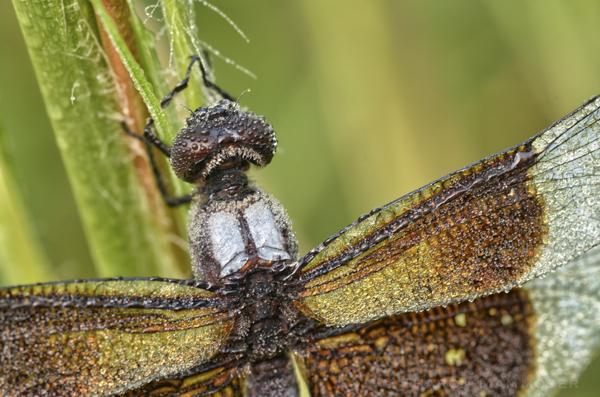
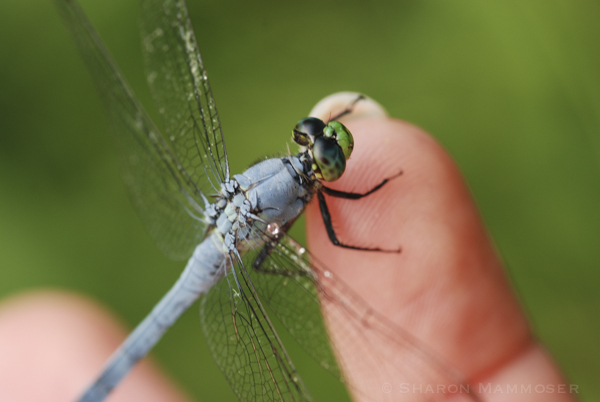
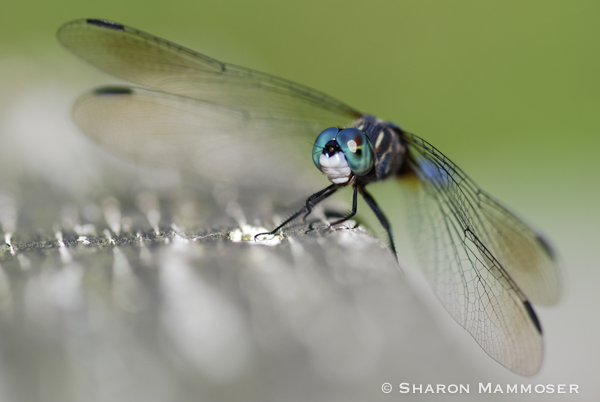

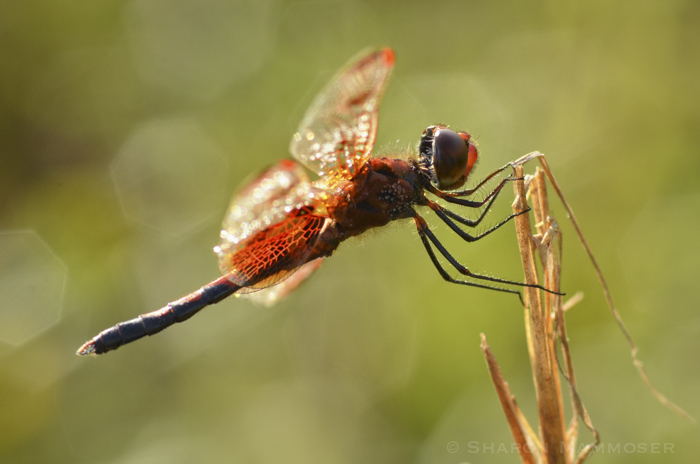
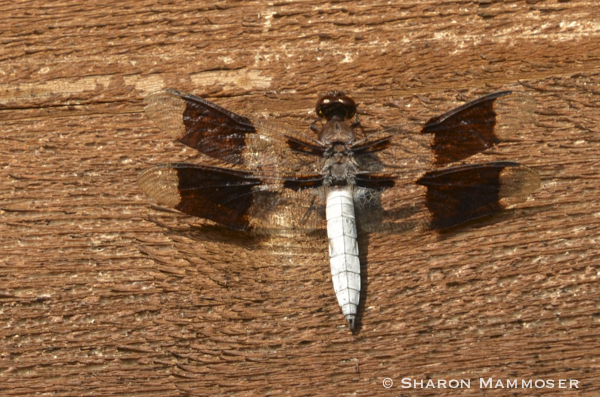
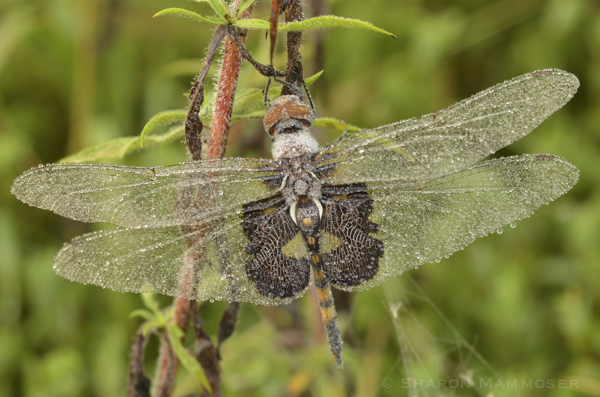
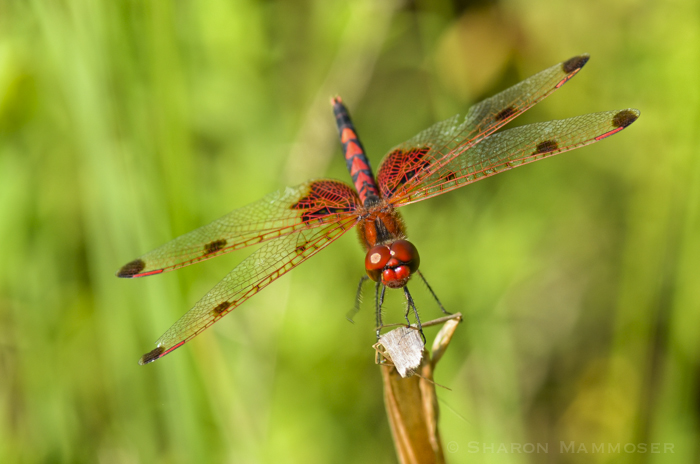
Male calico pennant
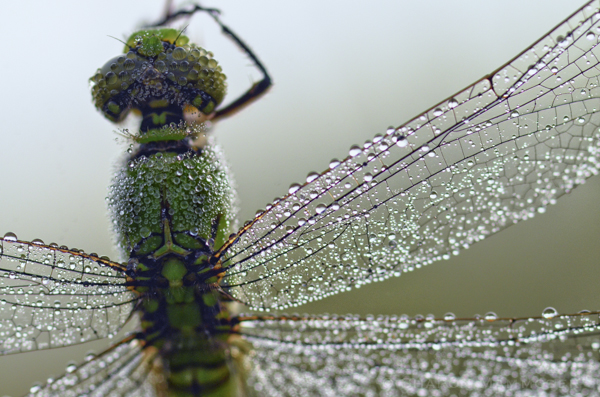
Which one is your favorite? (Mine is the calico pennant–like a kid drew hearts down the abdomen!, or the common green darner–talk about beautiful!, or the halloween pennant–like gold dust when the sun hits them..or… obviously I can’t say! I love them all!) Have you seen any of these at a body of water near you? What other ones have you seen in your outings? As always, I’d love to hear your comments or questions. Just use the comment box at the end of the post. And rest assured, I will never do anything with your information other than use it to comment back!


Fascinating! Gorgeous photos!! Thanks for the education. I will be on the look-out for these beauties in my nature walks.
Hey Arden! Thanks for reading. You are welcome! I LOVE dragonflies and it brings me great joy to be able to share them with others. They are so beautiful! I love all of their colors and their amazing adaptations. Let me know what you see!
Wow Lollygagger!! One of your best posts yet. So informative. I love all of the detail in your photos. I had no idea there were so many different types of dragonflies. Thanks so much for sharing. Have a great labor day weekend. 🙂
Hey Bill, thanks for the nice compliment! I am happy to see you are still following along. Thanks for taking time to read and comment! Happy holiday weekend to you too! Doing anything interesting?